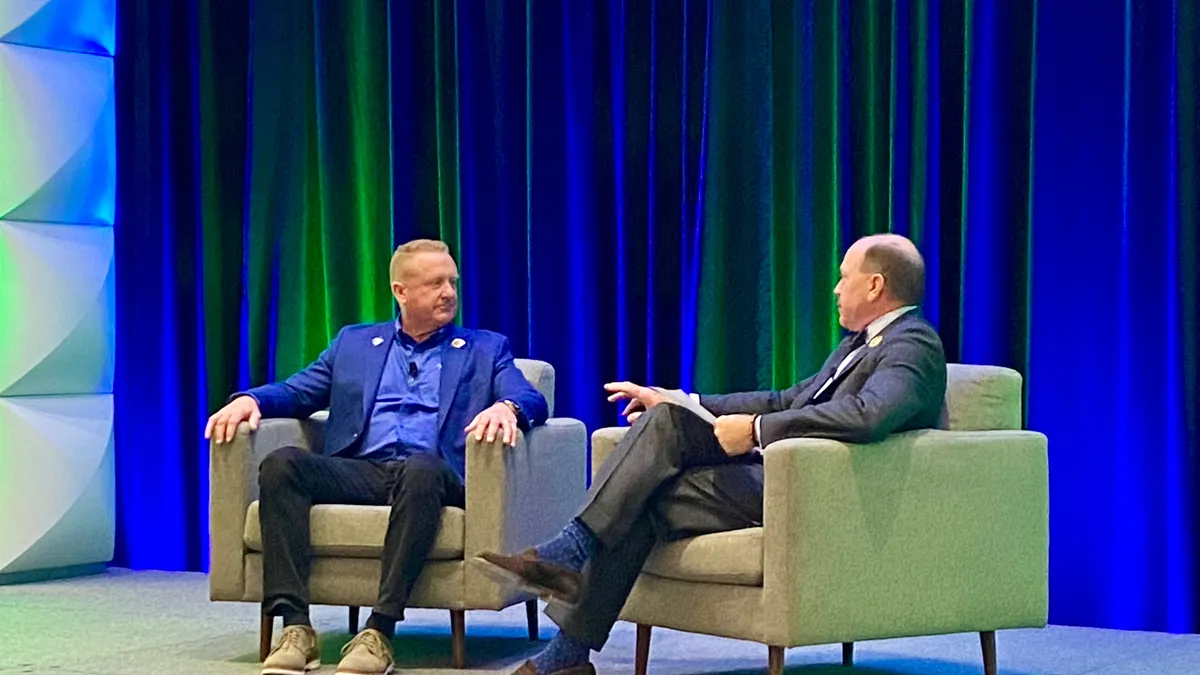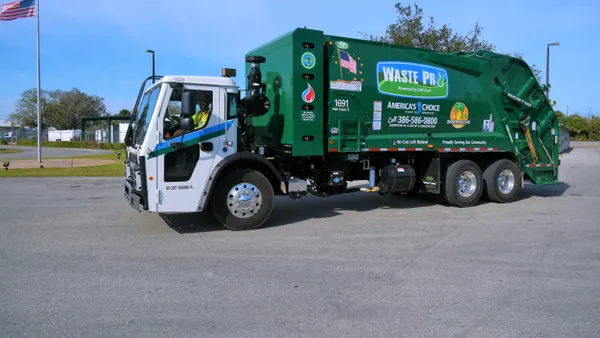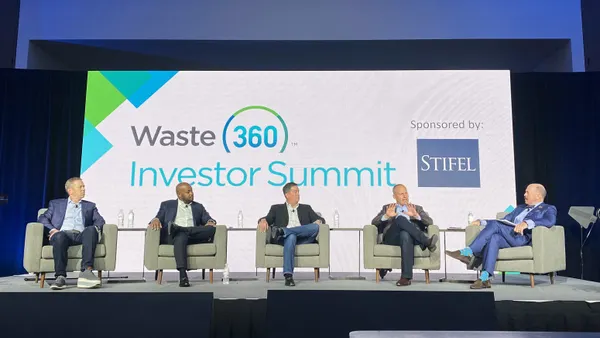Dive Brief:
- Waste Connections has “significantly” reduced its turnover rate in the last year due to a combination of leadership, recruitment and training improvements, CEO Ron Mittelstaedt said during the investor summit May 6 at WasteExpo in Las Vegas.
- Over the last four months, the company’s number of open positions has dropped by about 45%. Meanwhile, voluntary turnover is about 15.5%, with the goal of reaching between 10% and 12% by the end of the year, he said.
- Waste Connections expects to develop between 30% and 35% of its workforce internally by this time in 2025, mainly due to new commercial driver’s license and diesel technician programs that began this year. It has also changed its recruitment strategy to target more specific skill sets based on regional needs.
Dive Insight:
It’s been a year since Mittelstaedt has returned to his position as CEO, a role where he is known for promoting a “servant leadership” style that emphasizes company leaders being accountable to front-line employees. Mittlestaedt still sees this philosophy as a key to better hiring and retention because many workers leave the company due to conflicts with their managers, he said. “We view turnover as a direct reflection of local leadership and their willingness to be accountable to people,” he said.
Mittelstaedt had previously described 2023 as a “year of renewal” for the company as it focused more time and investment in employee retention and safety initiatives. He was initially CEO from the time he founded the company in 1997 until July 2019, when he transitioned to an executive chairman role.
At one point, up to 85% of employees who left the company did so voluntarily, but in recent months that has fallen to between 60% and 70%, he said. The goal is for voluntary turnover to make up around 50% of overall turnover. Aside from manager conflicts, Mittelstaedt said others leave the job because it’s physically demanding or not the right fit for the employee.
Open headcount has also fallen from 7.5% to about 4%. By the end of the second quarter, that number could be slightly lower than 4%, which is “exactly where we want to be,” he said.
In the last year, the company has also doubled down on its decentralized operating structure that gives local district managers more independence and flexibility to manage their locations.
During a separate Q&A session at WasteExpo, led by incoming National Waste and Recycling Association CEO Michael Hoffman, Mittelstaedt explained how the decentralized structure is meant to “create an empowered workforce so that workforce leads itself and makes the right decisions on their own, without being told what to do.” That frees up leadership to make broader business decisions without having to spend as much time “constantly putting out fires,” he said, adding that, “if you always feel like that, it’s a good indication you’re not really leading.”
While the company works to improve its leadership structure, it’s also streamlining recruiting techniques with longevity in mind. The company has increased its focus on pursuing candidates who “we know will succeed based on our DNA in a specific market” by looking at why its currently successful employees are flourishing in their roles.
The company is also doing more to attract workers who have already worked in environments with some similarities to the waste industry, such as major home improvement stores, he said. Other ideal candidates might be workers from other occupations, such as forklift operators who are interested in upskilling opportunities and a $10 an hour pay bump. Waste Connections is also considering ways to make work hours more flexible for employees who navigate scheduling complications such as raising children or attending classes.
Waste Connections continues to develop its training schools for CDL certification and diesel technicians. The CDL school opened in January, with a second expected to open June 15. The diesel technician program began in April. In terms of the schools’ impact on labor and retention, he said, “I feel it is not yet a needle mover, but one year from now it will be.”
The training programs bring in about 150 candidates a month, “about half of what we need” to fill open positions, Mittelstaedt said during the Q&A event. Waste Connections’ overall workforce continues to grow, in part due to multiple acquisitions.
For the CDL program, Mittelstaedt said many of the trainees come from within Waste Connections — including helpers, spotters and MRF employees. The company particularly looks for employees who have worked there between 16 months and two years “and have demonstrated their character.” Other major waste companies have also invested in creating their own training programs.
Having internal training programs will be even more important in the future as factors such as the pandemic, U.S. immigration politics, rising costs for college and the rise of technology continue to shape workers’ futures, he said. “The labor pool has permanently changed. It will look different from here on out,” he said.
Disclosure: WasteExpo is run by Informa, the owner of Waste Dive’s publisher, Industry Dive. Informa has no influence over Waste Dive’s coverage.











